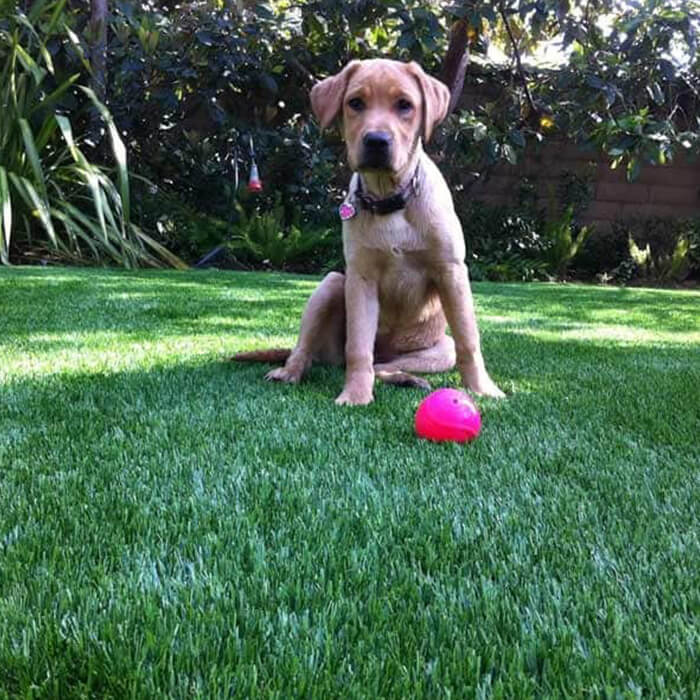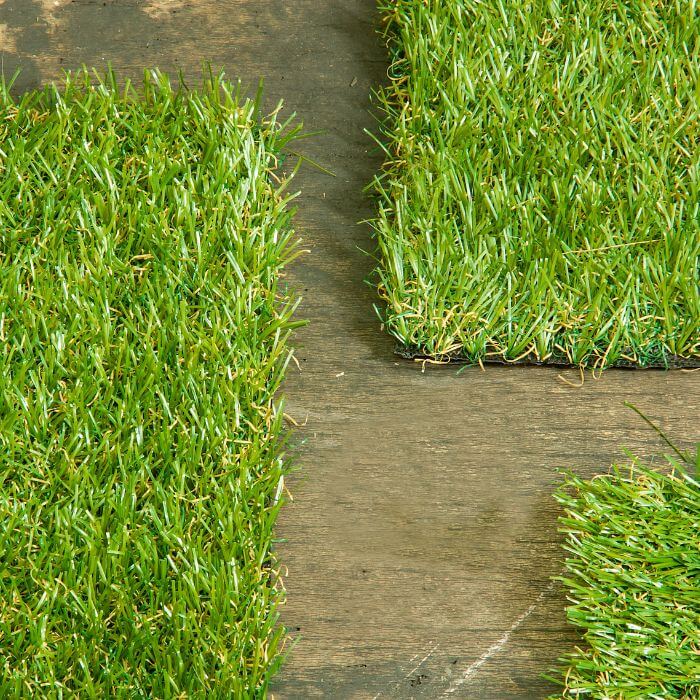Artificial turf is a popular choice for businesses and homeowners looking to add a little extra zing to their outdoor spaces. But like anything else, artificial turf needs occasional maintenance to stay in good condition. In this blog post, we’ll discuss the basics of installing and maintaining artificial turf, including tips on how to keep it looking its best. We will also provide a guide on adequately caring for artificial turf if you plan on using it outdoors year-round. So whether you’re new to artificial turf or have been using it for years, this blog post is a must-read.
Steps for Installing Artificial Turf
Turf is an integral part of any outdoor space. Whether you’re looking to spruce up your backyard, create a lush lawn for your pet, or establish a playing field for your children, there are several types of turf to choose from. Here’s a closer look at the most popular types of turf, so you can decide which type is best for your project.
Choose the Type of Turf
Synthetic Turf: Synthetic turf is the most popular turf for residential properties. It is made from polyethylene and polypropylene fibers, which can be molded and shaped like natural grass. It is also designed to be low-maintenance and drought-resistant, making it an excellent choice for homeowners who want a lush green lawn without the hassle of mowing or fertilizing.
Natural Turf: Natural turf is made from grasses and other plants grown in the soil. It is an attractive option for homeowners who want a realistic look and feel. Natural turf requires regular maintenance, including mowing, fertilizing, and periodic over seeding.
Hybrid Turf: Hybrid turf is a combination of synthetic and natural turf. It is made up of natural grass fibers interspersed with artificial turf fibers. This turf has the look and feel of real grass but requires less maintenance than natural turf.
Artificial Turf: Artificial turf is made of plastic fibers designed to look like natural grass. It is ideal for a no-maintenance lawn that looks great all year long. Artificial turf is also perfect for pet owners, as it is designed to resist pet waste and odor. Whatever type of turf you choose, make sure to consider your climate, budget, and desired maintenance level. With so many options available, you’re sure to find the perfect turf for your outdoor space.
Measure and Prepare the Area
-Measure the site you will be installing the artificial turf and mark any boundaries that need to be considered. Prepare the area by removing existing vegetation and debris, and ensure the surface is level and clean.
– Purchase artificial turf rolls or a synthetic grass mat.
-If installing artificial turf in an area that receives heavy rain, you will need to waterproof the surface before installation. Use a quality sealer and allow the synthetic turf to dry completely.
-Install artificial turf by rolling it out over the prepared area and taping it down firmly with low-profile tape or adhesive squares. Be sure not to stretch or pull on the turf too much; this can damage it.
Install the Base and Drainage System
– Install a base layer of gravel and sand for stability and to provide a drainage system for any water that may accumulate.
– Next, put artificial turf grass in a rectangular or circular pattern. Be sure that the turf is level and that there are no bumps or raised areas.
– Finally, add any permanent landscaping features such as shrubs, trees, and flowers.
Lay The Artificial Turf
Lay the artificial turf is a great way to add a beautiful, durable, and low-maintenance landscape solution to any outdoor space. Artificial turf is a popular choice for homeowners because it requires minimal maintenance, looks great, and is durable enough to withstand heavy foot traffic. It is also an excellent option for pet owners, as artificial turf is non-allergenic and pet-friendly. There are a few steps to follow when it comes to adequately laying artificial turf, and these include:
1. Prepping the Area: Before laying artificial turf, it is essential to prepare the area by removing any existing grass, weeds, or debris. Be sure to level the area with a rake or shovel, and add a layer of crushed stone or gravel to help drainage.
2. Installing the Turf: After prepping the area, it is essential to ensure the artificial turf is installed correctly. Start by unrolling the turf and making sure it is lying flat. Secure the turf to the ground with nails, staples, or adhesive.
3. Adding Infill: Once the turf is installed, it is essential to add an infill. The infill helps keep the turf in place and also adds cushioning, which helps provide a more comfortable walking surface.
4. Finishing Touches: Trim any excess turf and add a layer of turf sealer to help protect the turf from wear and tear.
Following these steps will help you to successfully lay artificial turf and ensure it remains in excellent condition for years to come. Synthetic turf is perfect for homeowners who want to add a low-maintenance and attractive landscape to their outdoor space.

Secure The Turf
Artificial turf is essential to maintaining the grounds’ integrity and safety. Synthetic turf is designed to be durable and resistant to the elements, but it is still important to secure it properly to ensure it will last as long as possible. Several methods to secure artificial turf include using screws, nails, and turf pins.
Screws and nails are the most common methods for securing artificial turf. They can attach the turf directly to the ground, frame, or edging that keeps the turf in place. It is essential to ensure that the screws and nails are correctly installed and tightly secured to the ground.
Turf pins are another standard method for securing artificial turf. They are inserted into the ground around the perimeter of the synthetic turf and then held in place by a locking mechanism. This creates a secure barrier that prevents the turf from moving.
Finally, ensuring that the artificial turf is maintained correctly is essential. This includes inspecting it regularly for any signs of damage or wear and tear. Any repairs should be done immediately to prevent further damage to the turf. Additionally, it is essential to keep the turf clean and free of debris to ensure that it remains in good condition for years to come.
By taking the time to secure and maintain the artificial turf properly, it can last for many years, providing a safe and secure surface to play on.
Maintenance of Artificial Turf
Routine Maintenance
Proper routine artificial turf maintenance is essential for keeping it looking and performing its best. For best results, the turf should be inspected and groomed regularly. Some of the routine maintenance tasks include brushing the turf to maintain pile height and direction, removing debris from the turf, sweeping or vacuuming the turf, and removing stains. It is also essential to check for any signs of wear or damage, such as loose seams or exposed backing.
Cleaning the Turf
Artificial turf should be cleaned regularly to keep it looking its best. Generally, water is sufficient to clean the turf, but a mild detergent may be used if necessary. When cleaning the turf, it is essential to ensure that the detergent is rinsed off thoroughly. It is also important to avoid harsh cleaners, such as bleach, as these can damage the turf fibers.
Repairing the Turf
If the turf develops any wear or damage, it should be fixed immediately. This can include stitching or patching seams, replacing sections of turf, or replacing the backing. Using the correct repair materials and following the manufacturer’s instructions is essential. Properly repairing the turf will help ensure that it remains in good condition and performs its intended function.

Pruning and Mowing
Artificial turf should be mowed regularly to maintain its appearance and shape. The height of the lawn should be held at a consistent level so that the turf remains uniform in appearance. To mow the artificial turf, use a grass-cutting blade or an electric lawnmower with a low-profile grass catcher. Be sure to pull the cord after each pass to avoid damaging the underside of the turf surface.
Irrigating
Artificial turf can be irrigated using a standard water hose. It is essential to avoid over-irrigating the turf, as this can cause it to become wet and muddy. To properly irrigate the artificial turf, aim the nozzle of the hose towards the center of the lawn and wait until all the water has been distributed before moving on to another area.
Conclusion
Ruff N Tuff Turf in Irvine, CA, provides the perfect solution for a low-maintenance, durable, and aesthetically pleasing alternative to natural grass. Their artificial turf is made from the highest quality materials and is designed to look and feel like natural grass. It is highly resistant to wear and tear and doesn’t require the same level of care as natural grass. The turf is also resistant to fading and discoloration, ensuring it will remain beautiful for years. Furthermore, the turf is designed to be safe for children and pets, making it an excellent choice for families. In conclusion, Ruff N Tuff Turf in Irvine, CA, is a perfect option for a low-maintenance, durable, and aesthetically pleasing alternative to natural grass.
The post How to Install and Maintain Your Artificial Turf appeared first on Ruff n Tuff Turf.

